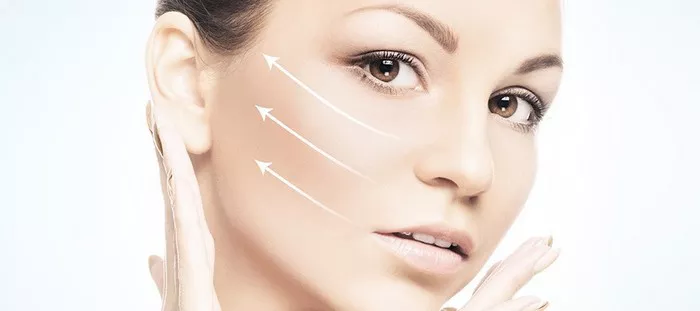Fillers have become a popular non-surgical option for individuals seeking to address the signs of aging, particularly in the nasolabial folds. These folds, also known as smile lines or laugh lines, can deepen and become more noticeable over time. Fillers offer an effective solution, providing immediate volume and smoothing out these creases. However, it is important to understand the factors that influence the longevity of fillers in nasolabial folds to manage expectations and plan for maintenance treatments. In this article, we will explore the duration and factors affecting the longevity of fillers in nasolabial folds.
Understanding Fillers and Nasolabial Folds
What are Fillers: Fillers are injectable substances that are used to restore volume and diminish the appearance of wrinkles and folds in the skin. They are typically composed of hyaluronic acid, collagen, or other biocompatible materials. Hyaluronic acid fillers are the most commonly used type for nasolabial folds due to their compatibility with the body and ability to attract and retain moisture, providing a plumping effect.
Nasolabial Folds: Nasolabial folds are the lines that extend from the sides of the nose to the corners of the mouth. These folds are a natural part of facial anatomy and can become more prominent with age due to the loss of collagen and elastin in the skin. Factors such as genetics, sun exposure, and facial expressions can also contribute to the deepening of these folds.
Duration of Fillers in Nasolabial Folds
Immediate Results: Fillers in nasolabial folds provide immediate results, as they instantly add volume and reduce the appearance of wrinkles. The improvement in the nasolabial folds can be noticeable right after the treatment, giving a more youthful and refreshed appearance.
Variable Longevity: The duration of fillers in nasolabial folds can vary from person to person. On average, hyaluronic acid fillers can last between 6 to 18 months in this area. However, individual factors such as metabolism, lifestyle habits, and the specific filler used can influence how long the results will last.
Factors Affecting the Longevity of Fillers in Nasolabial Folds
Metabolism and Lifestyle: Metabolism plays a significant role in how long fillers last in the nasolabial folds. Individuals with faster metabolic rates may break down the filler more quickly, resulting in a shorter duration of effect. Additionally, lifestyle factors such as smoking, excessive sun exposure, and poor skincare routines can contribute to the breakdown of fillers and the acceleration of the aging process.
Product Characteristics: The specific characteristics of the filler used can impact its longevity in the nasolabial folds. Different brands and formulations of hyaluronic acid fillers have varying degrees of cross-linking, which affects their stability and how long they last. Some fillers are designed to provide longer-lasting results, while others may be more suitable for temporary effects.
Injection Technique: The skill and experience of the injector can also influence the longevity of fillers in nasolabial folds. A knowledgeable and skilled injector will strategically place the filler to ensure optimal results and longevity. Factors such as depth of injection, placement, and the amount of filler used can all impact the duration of effect.
Individual Response: Each person’s body may respond differently to fillers, resulting in variations in how long the results last. Factors such as the body’s ability to break down the filler, the rate of collagen production, and the overall health of the skin can influence the longevity of the filler in the nasolabial folds.
Maintaining Results and Longevity
Follow-Up Treatments: To maintain the results of fillers in the nasolabial folds, follow-up treatments are typically necessary. These treatments are often scheduled several months after the initial injection to replenish the lost volume and maintain the desired outcome. Regular maintenance treatments can help prolong the effects of fillers and prevent the deepening of nasolabial folds.
Combining Treatments: Combining fillers with other cosmetic procedures can enhance and prolong the results in the nasolabial folds. For example, treatments such as laser resurfacing or micro-needling can stimulate collagen production and improve skin texture, complementing the effects of fillers.
Skincare and Lifestyle: Adopting a healthy skincare routine and lifestyle habits can support the longevity of fillers in the nasolabial folds. Protecting the skin from sun damage, using recommended skincare products, and avoiding smoking can help slow down the aging process and maintain the results of fillers.
Conclusion
Fillers are an effective and non-surgical option for addressing nasolabial folds, providing immediate volume and reducing theappearance of wrinkles. However, it’s important to understand that the longevity of fillers in nasolabial folds can vary from person to person. On average, hyaluronic acid fillers can last between 6 to 18 months in this area. Factors such as metabolism, lifestyle habits, the specific filler used, and individual response can all influence how long the results will last.
To maximize the longevity of fillers in nasolabial folds, following up with maintenance treatments is crucial. These treatments are typically scheduled several months after the initial injection to replenish lost volume and maintain the desired outcome. Additionally, combining fillers with other cosmetic procedures, such as laser resurfacing or micro-needling, can enhance and prolong the results.


